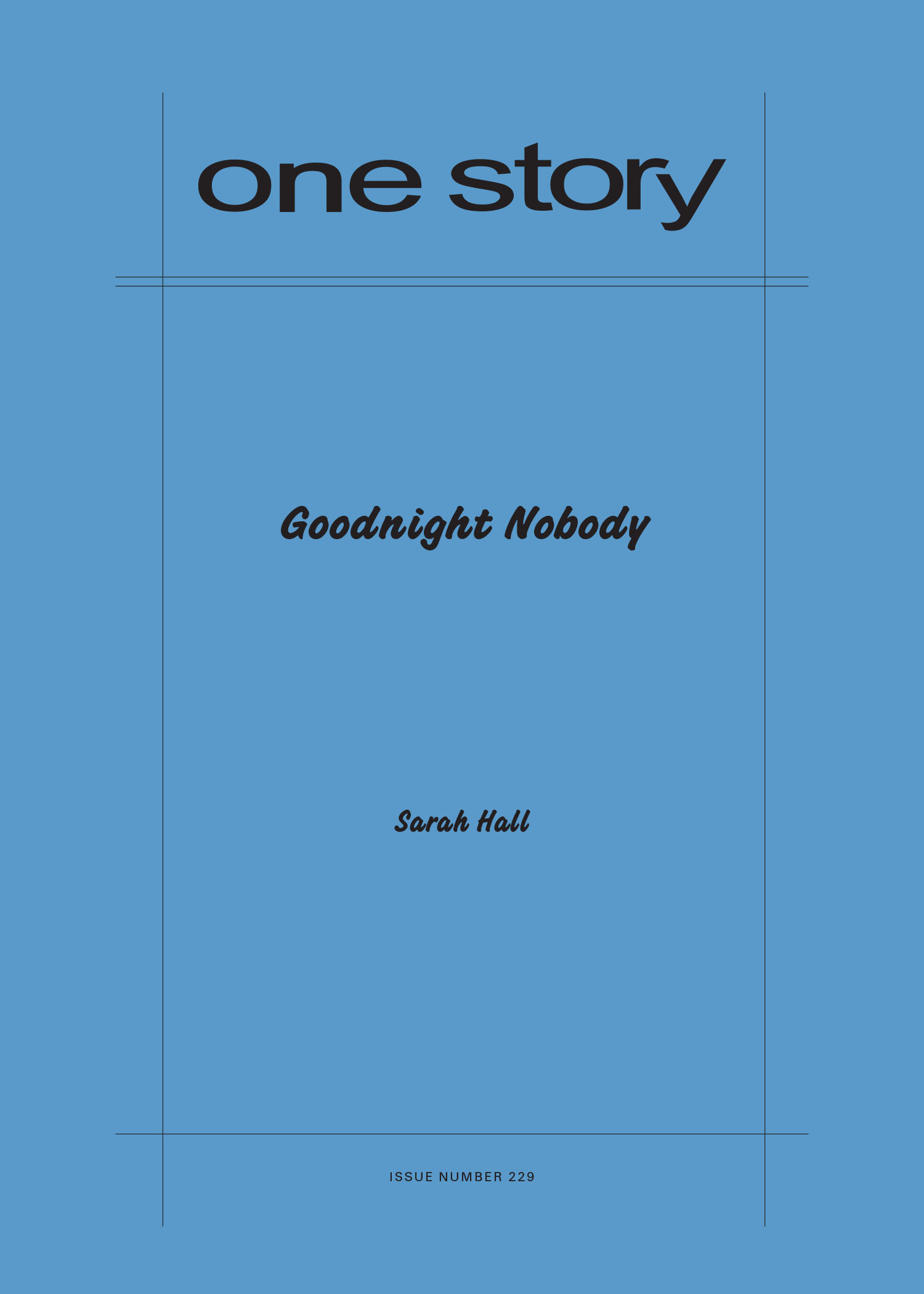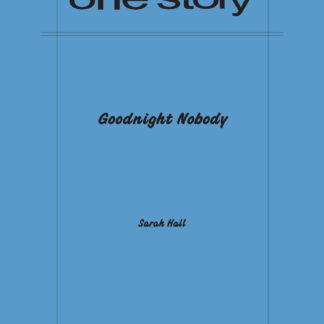
Goodnight Nobody
105 in stock
Excerpt
Jem had seen the dog the week before, the day after her birthday, while she’d been breaking in her new shoes. It was a small dog, a Jack Russell or a terrier, not something that looked dangerous like the muscly Doberman and the mint-eyed Alsatian further down the street. She’d seen the man walking the dog by the weir, and she’d seen it tied up outside the Saracen’s Head. It didn’t choke its lead or drool or go for people. The man was hard-faced though, hair buzzed to the scalp, tight jeans he was too old to wear, dark red boots laced up his shins. He had a tattoo on his neck. A web. Or a net. Something stringy. Mumm-Ra said tattoos outside the collar and cuff meant people were beyond civilization. Mumm-Ra saw a lot of tattoos at work, in all kinds of hidden places. She often told Gran about them. Once a woman with only one breast had had one where the other breast wasn’t. A rose.
Outside the man’s house there was a police van. It’d been there all morning. The lights and the engine were off, but it was very noticeable, very nosey-looking. They would be taking the dog away soon, Jem was sure.
Sarah Hall
Sarah Hall is the author of five novels and two short story collections, including Haweswater, which won a 2003 Commonwealth Writers Prize for Best First Novel; The Electric Michelangelo, which was shortlisted for the Man Booker Prize; and the short story collection Madame Zero, from which “Goodnight Nobody” is excerpted. Her work has been translated into more than a dozen languages. She is a recipient of the American Academy of Arts and Letters E.M. Forster Award. She has tutored for the Faber Academy, The Guardian, and the Arvon Foundation, and she has taught creative writing in a variety of establishments in the U.K. and abroad. Sarah currently lives in Norwich, Norfolk, in the UK.
Patrick Ryan on “Goodnight Nobody”
Dear Reader,
Meet Jem, an eleven-year-old girl who is leaning forward toward adulthood with all her might. She has, as the author describes it in our Q&A, “an elastic, skipping-ahead brain” that doesn’t necessarily want to focus on the little brother she’s often charged with watching, that would much rather be investigating the bloody incident that has taken place down the street—an incident that’s left one person dead and put another person in jail. (Her brain would also like to be watching Thundercats, but that’s not an option at present.)
Sarah Hall, the author of “Goodnight Nobody,” is one of the most careful writers I know. Her word choices, narrative pacing, and sentence rhythm are the result, I suspect, of a great deal of hard, obsessive work. And yet none of that calls attention to itself. The nuts, bolts, and machinery are all hidden away, and her work is a pleasurable breeze to read. One of the great achievements of this particular story is the fact that its voice is so intimately attached to Jem, it feels as if it’s written in the first-person. I find “Goodnight Nobody” to be an addictive read, and I hope you do too.
If, by chance, you haven’t encountered Sarah Hall’s work before (she now has two story collections and five novels under her belt), I’m all the happier to be introducing you to her. Her new story collection is called Madame Zero. She’s a treasure, and we’re honored to have her in the One Story family.
Q&A by Patrick Ryan
- PR: Where did the idea for this story come from?
- SH: I was reading Goodnight Moon by Margaret Wise Brown to my daughter and when I came across the blank page with “Goodnight nobody” written on it I had a funny turn, sort of like an existential crisis moment. Probably lots of parents have had that reaction to the same page. But my daughter also seemed to have a funny turn. She was two. She just did not know what to make of it. This got me thinking about how we, adults and children, ask those difficult—sometimes unspeakable—questions about existence, life, and death, and what answers we come up with, or don’t. Of course, the short story model, by virtue of its inbuilt metaphysics and insolvencies, often does just that. Questioning the hard stuff, and not necessarily supplying answers. Still, stories are very companionable during the existential crisis moment!
- PR: You brilliantly capture the perspective and voice of an eleven-year-old, and you do it in the third-person. What did you do in order to slip into this voice so smoothly—channel your younger self?
- SH: Oh, Lord, I wasn’t even sure I’d nailed it—so thank you. I sent early versions of the story to friends with children that age for their thoughts and they caught a couple of discrepancies. My niece was also twelve the year the story was written. Eleven/twelve can be such a problematic, mutable age, with pre-puberty and puberty—but it’s also quite flexible, with girls especially motoring ahead towards adulthood, or still young and vulnerable, or both at once. So it allows for a range, narratively, of thoughts and ideas, and selves even. Jem flexes. She looks after her brother and studies quite complicated biology in school, she’s sensible and responsible but isn’t physically developed like some of her contemporaries and is bullied for being different and still liking cartoons.
- PR: Did you encounter any particular challenges in having the point-of-view attached to a character so young? Did you find yourself having to “scale back” certain descriptions or interpretations?
- SH: I did, yes. Jem has quite an elastic, skipping-ahead brain, she jumps on to subjects very quickly, the danger of which was making the text seem too synaptic, too sketchy, especially in the third person. But you can use limited perspective to your advantage too. The experiences Jem hasn’t had yet, like getting her period, but is very aware of, and quite frightened by, mean angles can be found on more adult matter, even if Jem is in some ways excluded, and tensions are set up in the text. What Jem doesn’t know and doesn’t understand, even as her brain tries to furiously comprehend things, the negative space if you like, the blank page, is what the story pivots on.
- PR: In general, do you think children are more drawn toward spectacles of violence than adults, or vice-versa? Or are we all equally morbidly curious once we reach a certain age?
- SH: I think we’re all curious. But maybe children and young adults are more curious and have less discipline in not being so curious! But we all want to climb that back wall and see the killer dog, right?
- PR: With the publication of Madame Zero (which will contain the story “Goodnight Nobody”) you’ve published two story collections and five novels. For someone reading this Q&A who hasn’t yet read your books, where do you recommend they start? Which book first, and why?
- SH: Difficult, as the subject matters of the novels range so widely. Daughters of the North might prove a tonic to Trump. The Wolf Border is topical in terms of re-wilding and possible Scottish devolution. I think both provide pretty interesting female characters, for those who like a little action from their gals. But in some ways I think short stories do something really good for my writing, as if a disciplinarian is in the room when I’m writing (I can be a little unbound and crazy over the long form!). I think probably the best pieces of fiction I’ve written are in the two story collections.
- PR: What are you working on now?
- SH: I’m working on explaining “goodnight nobody” to my daughter. And a new novel. And I’m judging the Man Booker prize. All of which is consuming, if not dementing.
- PR: What is the best bit of advice about writing you have ever received?
- SH: Still waiting for it... I’m very open.
